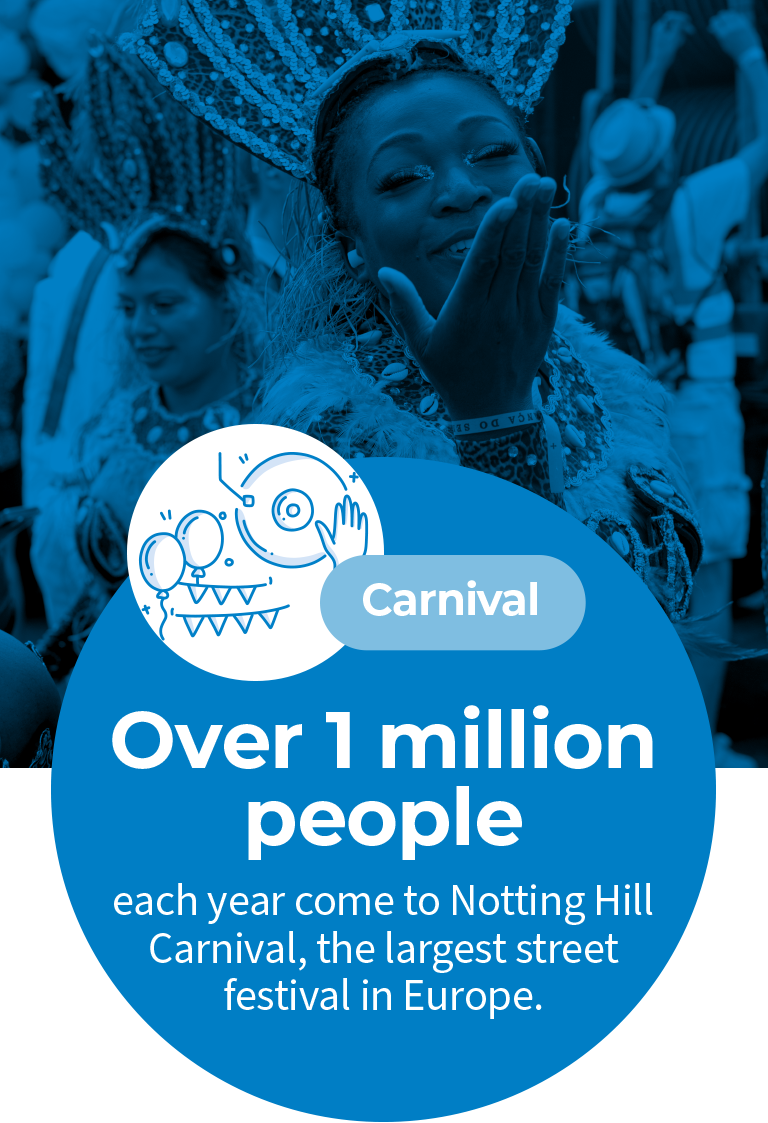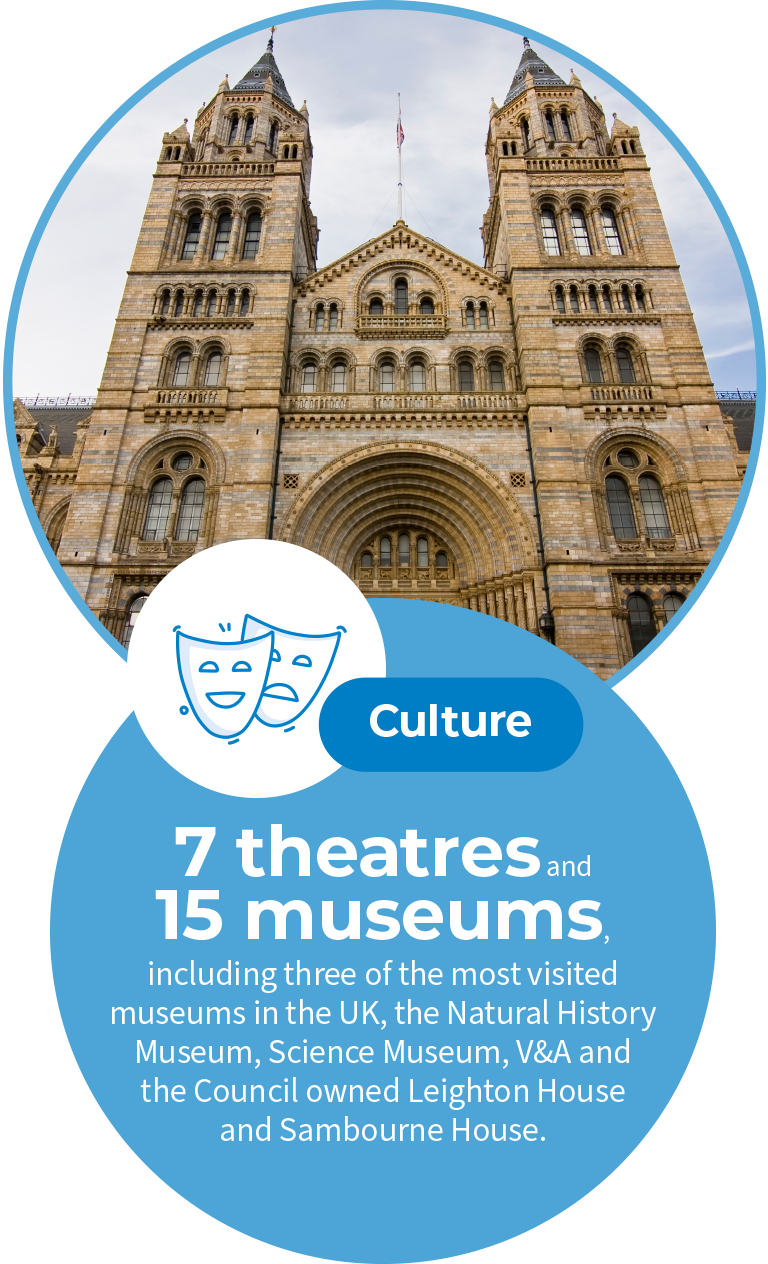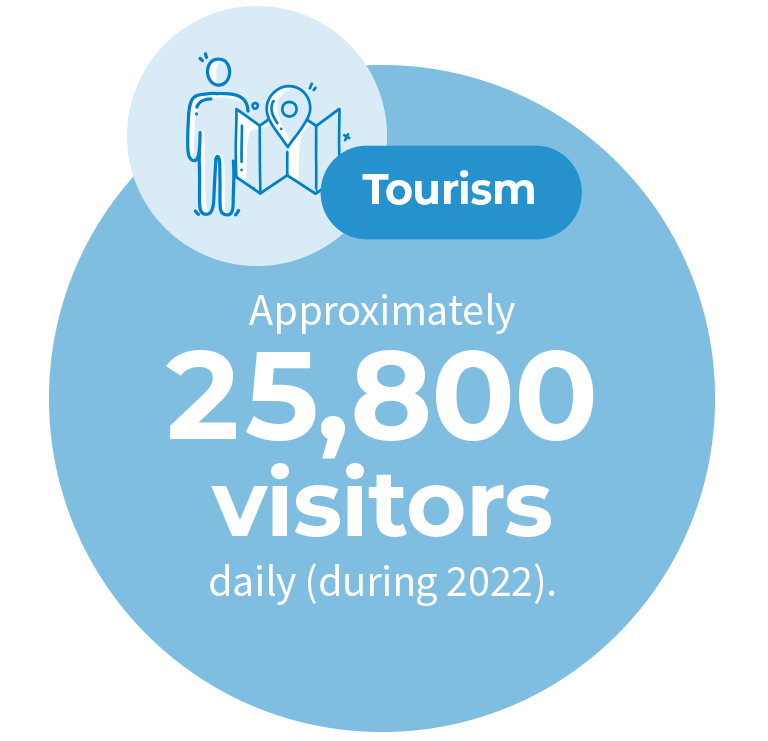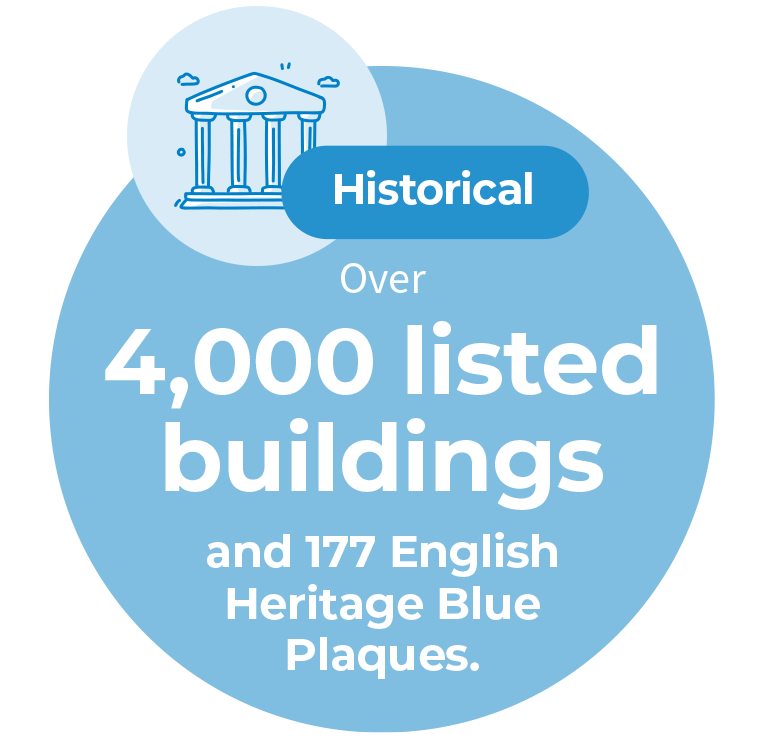Our borough

Culture
Kensington and Chelsea is a unique and diverse central London borough, which is rich in culture and heritage. With a population of almost 144,000 residents, the borough is home to residents of over 50 different nationalities who speak over 80 languages. Residents of Kensington and Chelsea have told us that they love and are proud of the mix of cultures and backgrounds in the area.
The borough hosts many nationally and internationally recognised cultural attractions like Notting Hill Carnival and Opera Holland Park. North Kensington is an area known around the world for its vibrant cultural heritage, musical authenticity, and proud history. Kensington Palace, the Victoria & Albert, Natural History, Science and Design Museums are just some of our landmark institutions, as well as world class retail stores and unique independent shops and markets, including the world-famous Portobello Market. People have told us they value the borough’s history, heritage and amenities.
As a central London borough Kensington and Chelsea has a large visitor economy with 136,000 jobs and nearly 16,000 businesses. We want to promote our borough, attracting the right types of jobs, investment, and facilities for our communities, while continuing to provide the conditions and support for existing businesses to succeed.

Heritage
Kensington and Chelsea is an area of huge social and cultural diversity, which includes significant differences in income, employment, and skills levels. Most employed residents are in highly skilled professional jobs, but the borough has areas where people are on low incomes, particularly in north Kensington and parts of the south and west of the borough.
The cost of housing means that deprivation is often concentrated in areas with a large proportion of social housing. While many residents in these areas face challenges, these are also areas bursting with creativity and community life. We have heard many ideas from residents in these communities about how the Council can work with them to provide support.
Overall, our borough continues to have the highest life expectancy in the country, however this varies between the north and the south, between people from different ethnic backgrounds, and between homeowners, private renters, and those in social housing. These existing inequalities have been exacerbated by the pandemic and rising cost of living. These challenges have resulted in our ongoing focus on fairness. While there are limits to the extent we can affect overall inequality, by focusing efforts on partnership and providing more joined up support in community settings, we can improve access to opportunities and ensure people have access to the help they need. We continue to make progress. We have more schools graded as outstanding than any other borough and attainment levels in our schools continue to be above national and London averages, with the most disadvantaged pupils outperforming their peers in other areas of the country.


Living in the borough
With a median property price of £1.4 million, affordable housing is in short supply; there are around 20,000 homes for social rent in Kensington and Chelsea, which is unlikely ever to be enough to meet demand. Although the situation here is extreme, these same challenges are seen elsewhere in London. Increasing housing supply is a priority for local people, and while the Council cannot tackle this challenge alone, it remains committed to its target of building 600 new homes, of which at least 300 will be for social rent. Given the nature and size of the borough, increasing the amount of genuinely affordable housing will always be a challenge.
We have heard how valued our parks and open spaces are by all residents, so we will continue to invest in them. Alongside that, the Council is taking steps to help the community become greener. There are now 782 electric vehicle charging points in Kensington and Chelsea, and we are investing in our buildings and Council homes to continue to become more energy efficient.
As we look forward to celebrating, promoting, and improving our borough and alongside tackling these long-term complex challenges, we will listen to our residents and put our communities at the heart of everything we do.
Diversity in the borough






